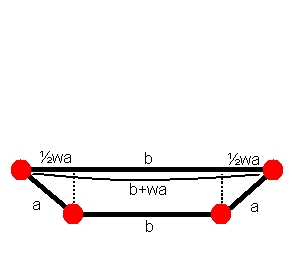I tried to verify my (supposed) l-tetstott ex, but found out I got the lace tower of ex completely wrong



so, I tried to make a correct expansion of ex, but failed miserably again

- Code: Select all
//original
x3o3o (-x)3x3o o3x3o//this part is verified to be CRF, as in D.4.8
o3o3f o3o3f x3o3f
o3f3o o3f3o x3f3o
f3o3x f3o3x F3o3x
o3x3f o3x3f x3x3f
x3f3o (-x)3F3o o3F3o //until here it follows D.4.8.x, this is also the point after which things get weird.
F3o3o F3o3o X3o3o //this can't stack properly with o3F3o
f3o3f -> f3o3f -> F3o3f // this won't stack with o3F3o or X3o3o either
o3o3F o3o3F x3o3F//this won't stack with o3F3o either
o3f3x o3f3x x3f3x //this will stack, with a height of 0,7071067812
x3o3f (-x)3x3f o3x3f //stacks
o3f3o o3f3o x3f3o
f3o3o f3o3o F3o3o
o3o3x o3o3x x3o3x //stacks 0,2185080122 with F3o3o and 0,3535533906 with x3f3o
I think the problem lies in having no alternative to expanding F3o
and, when exploring that, I stumbled upon a way to alternatively expand anything, which is probably quite a powerful tool at hand, but gives us waaay many possibilities.
consider hexagon a3b, which "is the same as" (-a)3(b+a). If you expand this, you get hexagon (-a+1)3(b+a)
as is visible in the picture above, the edge length between the bottom two points is b+a-(-a+1), which is b+1.
in fact any hexagon a3b can thus be expanded as (a+1)3b or (a-1)3(b+1)
![Pleased :]](./images/smilies/pleased.gif)
it goes even further than that, but I was too lazy to make a complete drawing for that, so here is the theory:
a random node is denoted as %
the length of the first shortcord belonging to a regular %-gon is w
according to student91's rule on negativity and stuff, x%o "=" (-x)%(wx) which can be mutliplied by anything, so a%o"="(-a)%(wa)
I don't know if it's already proven, but the drawing below shows that a%b "=" (-a)%(b+wa)

- stuff2.jpg (16.56 KiB) Viewed 35486 times
if you stott-expand this, you get (-a+1)%(b+wa)
and if you substitute (-a+1) in a and (b+wa) in b and apply a%b "=" (-a)%(b+wa) again, you get
(-a+1)%(b+wa) "=" -(-a+1)%(b+wa)+w(-a+1)) = (a-1)%(b+w)
so any polygon a%b can be expanded either as (a+1)%b or (a-1)%(b+w)
edit: 











 D4.4 is already allocated, so it will stay as is, rather than becoming D4.4.0.
D4.4 is already allocated, so it will stay as is, rather than becoming D4.4.0.





![Pleased :]](./images/smilies/pleased.gif)
